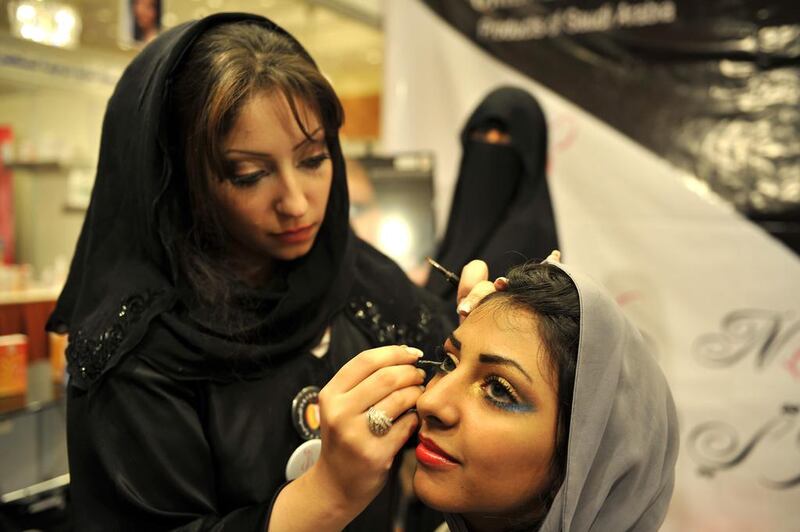Almost every tradition in the Arab world has a legend behind it and the abaya is no exception.
Sometime in the eighth century, during the Abbasid Islamic period, the story goes that a merchant selling cloaks ran out of all the colourful ones and was left with only black ones that no one wanted.
Out of despair, he visited a poet friend and asked him for help. The poet then composed a poem praising the beauty of a woman cloaked in the “mysterious” black garment, a colour worn by the rich and noble.
The legend ends with how women descended on this cloak seller and bought all the black garments, leaving him rich, and the women feeling rich.
Growing up wearing all types of black abayas, from those peppered with bright colours and lace, to those embroidered with my initial, “R”, to those sparkling with crystals and colourful gems, the abaya and the shayla (headscarf) become part of your identity when you live in places like Saudi Arabia. There it is obligatory and all women, nationals and expatriates, must wear it.
The abaya helps you stand out and blend in at the same time, and there are certain fashion rules about it, but ultimately it is there to protect a woman’s modesty in line with Islam and culture. On a recent visit to Jeddah, I was greeted by Saudi friends who poked fun at my “traditional” black abaya and shayla, as each one of them wore a completely coloured abaya and matching shayla.
One wore a flowy beige creation with delicate off-white lace, while another wore more fitted grey with navy blue lines cut out in different geometrical designs; a third was wearing a very sporty-looking sky-blue abaya with a leather belt.
Then during trips to malls and restaurants, one would see colourful abayas that stood out from among the black-clad crowds of women. For as long as I remember, Jeddah has always been a trendsetter, not just in clothes, but in innovations and the arts.
“The colourful abayas had started in Jeddah and this fashion trend is moving slowly towards the rest of Saudi Arabia,” says Saudi fashion designer Effa Al Dabbagh, who is from Jeddah and has a boutique in Dubai, called Effa.
“This past year, the coloured abayas became more widespread, especially among the younger generation, where you see them wearing neutral pastel colours, like grey, khaki, sky blue, yellow,” says Al Dabbagh, who has been designing couture abayas and dresses for more than eight years.
While it is picking up in part in Saudi Arabia, Al Dabbagh feels that in other Arabian Gulf countries, like the UAE, the women are sticking to black.
“The shayla will always be black as it is part of a cultural identity.”
And it wasn’t just the women who were trying to set trends in Jeddah. The Gulf men wear a long white thobe (the item known as a kandura in the UAE), with different designs at the collar that are specific to the different Gulf countries. In winter, thicker and deep-coloured kanduras are sometimes worn by Emirati men, but nothing as light and bright and decorated as those worn by some Saudi men this winter in Jeddah.
Some Saudi men donned colourful kanduras, in shades including navy, lemon yellow and blue, made out of linen and cotton, with embroidery along their collars and sleeves, as well as elaborate buttons and even zippers. Some are more daring, such as a group of young Saudi men wearing baby-blue kanduras – and even baby pink.
“Traditionally, men in Mecca and Medina in the past, over a hundred years ago, would wear clothes with embroidery,” says Al Dabbagh. “So in a way, there is a return to some decoration and designs that were there in the past.”
Ultimately, most women do stick to black and men tend to choose white. “They say black is the king of colours, it is the original. And so while there is now a spread of colours and experimentation going on, I believe we will eventually go back to black,” she says.
Time will tell how far these fully coloured abayas will go and who will decide to wear them and where. In the meantime, there is no shortage of choices when it comes to abayas. But even with all that choice, there are still women who get completely unique abayas designed.
As my good Saudi friend said: “I don’t want to bump into anyone with the same abaya as me, and what’s worse, if she carries it off better than me.”
Rym Ghazal is a senior feature writer at The National.
[ thereview@thenational.ae ]





